Digital Poster
Muscle MRS & CEST
ISMRM & ISMRT Annual Meeting & Exhibition • 10-15 May 2025 • Honolulu, Hawai'i

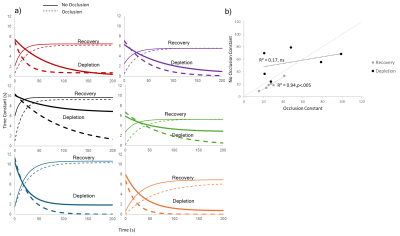 |
Computer Number: 81
4507. Optimisation
of the quantification of muscle phosphocreatine degradation
during dynamic exercise and recovery using 31P MRS

R. Nicholas, S. Bawden, C. Bradley, M. Kaviani, P.
Greenhaff, S. Francis
UNIVERSITY OF NOTTINGHAM, Nottingham, United Kingdom
Impact: To use 31P
MRS to assess the phosphocreatine kinetics in a moving
muscle during exercise, non-localised short TRs are
necessary to robustly measure both depletion constants
during exercise and recovery, key to the accurate
quantification of contributions to energy delivery.
|
|
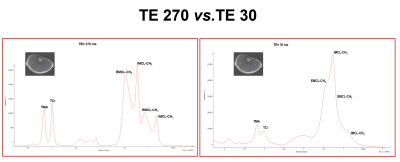 |
Computer Number: 82
4508. A
Comparative Study of PRESS, STEAM, sLASER, and LASER Techniques
in Soleus Muscle Long Echo Time MRS at 3T
R. Nagarajan, M. Sheehan
University of Massachusetts Amherst, Amherst, United States
Impact: Provides insights for researchers in sports
science aiming to assess muscle metabolism. By identifying
the most effective MRS techniques for detecting IMCL and
EMCL lipids, it can inform protocols for evaluating muscle
health in athletes and patients with metabolic disorders.
|
|
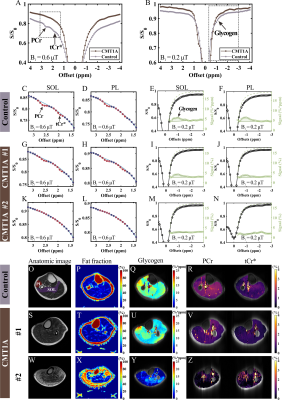 |
Computer Number: 83
4509. Saturation
transfer MRI of creatine, phosphocreatine and glycogen in
patients with Charcot-Marie-Tooth (CMT) disease
X. Chen, X. Sun, X. Liu, C. Bie, L. Chen, H. Yuan, Y. Zhou
Shenzhen Institute of Advanced Technology, Shenzhen, China
Impact: Simultaneous monitoring of Cr, PCr and glycogen
in muscle holds potential for tracking CMT progression and
may offer a promising non-invasive approach for monitoring
muscular disorders in humans.
|
|
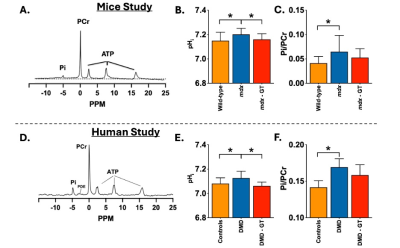 |
Computer Number: 84
4510. Metabolic
effects of micro-dystrophin gene therapy on dystrophic skeletal
muscle in mice and humans evaluated with 31P-MRS
S. Forbes, P. Awale, C. Lopez, R. Willcocks, D. Lott, J.
Chamberlain, K. Vandenborne, G. Walter
University of Florida, Gainesville, United States
Impact: Overall, these findings support that 31P-MRS may
be a valuable tool for evaluating treatments in muscular
dystrophies.
|
|
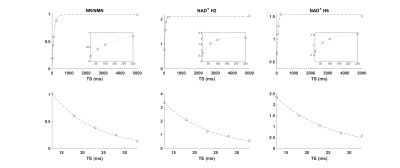 |
Computer Number: 85
4511. Estimation
of skeletal muscle concentrations of NAD+ and NR/NMN using 1-H
MRS at 7T with measured T1 and T2 relaxation corrections
N. Wilson, S. Swago, R. Nanga, W. Witschey, M. Elliott, R.
Reddy
University of Pennsylvania, Philadelphia, United States
Impact: For the first time, concentrations of NAD+ and
NR/NMN have been estimated in skeletal muscle in vivo
noninvasively with 1-H MRS.
|
|
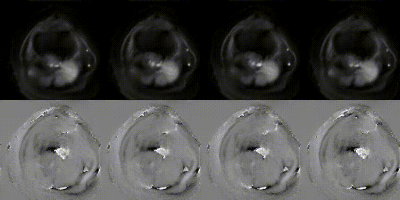 |
Computer Number: 86
4512. Interleaved
31P-MRS/1H-MRI during dynamic exercise to simultaneously measure
skeletal muscle energetics and blood flow
T. J. Samuel, J. Goldenberg, S. Lewsey, A. Hays, R. Weiss,
M. Schär
Johns Hopkins University School of Medicine, Baltimore, United States
Impact: Simultaneous assessment of skeletal muscle
energetics and blood flow via interleaved 31P-MRS
and phase contrast MRI will allow for mechanistic
simultaneous assessment of underlying contributions to
impaired energetics seen in a variety of clinical
populations.
|
|
 |
Computer Number: 87
4513. Investigation
of processing and acquisition parameters on calculation of PCr
recovery rates
C. Shook, L. Sparks, P. Coen, B. Goodpaster, H. Cornnell
AdventHealth Orlando, Orlando, United States
Impact: 31P spectroscopy acquisition and processing
parameters should be carefully documented to ensure
comparable results across studies. Future studies should
consider investigating the calculation or assumption of PCr
and ATP concentrations.
|
|
 |
Computer Number: 88
4514. In
Vivo Characterization and Identification of Novel Resonances in
the Downfield ¹H MRS of Human Skeletal Muscle/Calf Muscle at 3T
M. K. Sarma, A. Henning
UT Southwestern Medical Center, Dallas, United States
Impact: This is the first reported detection of new
resonances at ~10.1, 11.3, and 11.7ppm in downfield of the
¹H MRS of skeletal muscle at 3T. This will be beneficial to
study role of these metabolites in healthy and disease
condition.
|
|
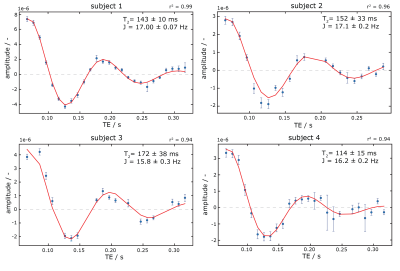 |
Computer Number: 89
4515. Dynamic
Lactate Detection in Skeletal Muscle Using DQF at 7T:
Post-Exercise Clearance and T2 Relaxation Analysis
V. dos Santos, K. Repnin, V. Cap, R. Frass-Kriegl, G. Kemp,
M. Meyerspeer
Medical University of Vienna, Vienna, Austria
Impact: Accurate in
vivo data on intramuscular lactate T2 and
clearance are essential for quantitative understanding of
human muscle metabolism. Disentangling the roles of muscle
lactate in exercise is relevant for understanding exercise
physiology and various metabolic diseases.
|
|
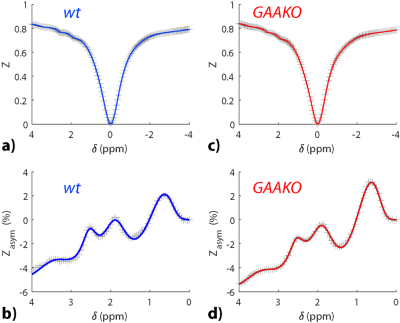 |
Computer Number: 90
4516. Monitoring
muscle glycogen accumulation in the GAAKO mouse model of Pompe
disease with glycogen CEST (GlyCEST) MRI
L. Wu, H. Kim, J. Chung, P. Sun
Neuroscience Center and Department of Pediatrics,MGH, Charlestown, United States
Impact: GlyCEST is promising to monitor glycogen levels
in Pompe mice in real-time non-invasively and is potentially
valuable for monitoring treatment response and ultimately
clinical translation.
|
|
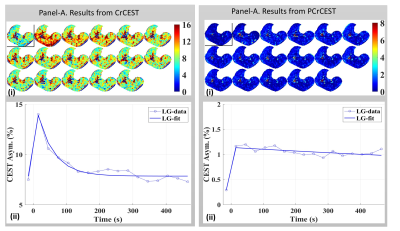 |
Computer Number: 91
4517. A
Comparative Study of CrCEST and PCrCEST for Mapping of Oxidative
Phosphorylation in Exercised Muscle
B. Benyard, A. Swain, A. Mathur, N. Soni, R. Armbruster, S.
Khokhar, M. Haris, N. Wilson, R. Reddy, D. Kumar
University of Pennsylvania, Philadelphia, United States
Impact: OXPHOS deficiency in skeletal muscle is
associated with primary mitochondrial disorders, muscle
injury, cardiovascular disease, and diabetes mellitus. This
study compares the sensitivity and specificity of two
CEST-based methods for assessing OXPHOS.
|
|
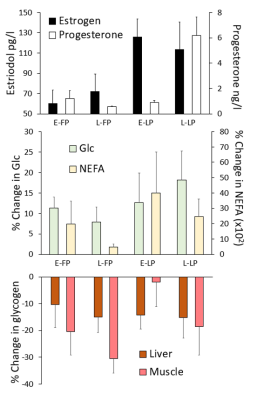 |
Computer Number: 92
4518. Using
13C MRS to monitor the effects of gonadal steroids throughout
the menstrual cycle on substrate utilisation
S. Bawden, A. Spicer, M. Kaviani, T. Matsuda, P. Gowland, G.
Aithal
University of Nottingham, Nottingham, United Kingdom
Impact: This study provides novel in-vivo data of
exercise induced changes in substrate utilisation which can
be used to inform future research and interventions in
energy metabolism. Data provides useful knowledge in sports
science and medicine.
|
|
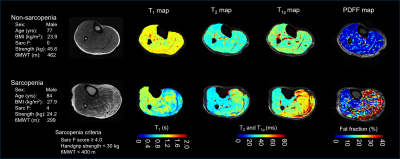 |
Computer Number: 93
4519. Association
between Muscle Function, Quantitative MRI, and Phosphorus-31 MRS
Parameters in Heart Failure Patients with Sarcopenia
K. Kim, B. Eck, V. Province, J. Kasper, S. Augusto Junior,
J. Wilcox, T. Engelman, W. W. Tang, X. Li
Cleveland Clinic, Cleveland, United States
Impact: This study highlights the potential of qMRI and 31P-MRS
to noninvasively characterize muscle quality and
mitochondrial function in HF patients with sarcopenia, which
could inform targeted interventions.
|
|
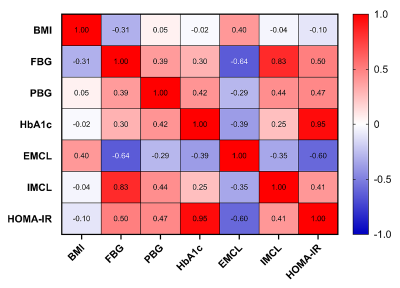 |
Computer Number: 94
4520. Assessment
of Intramyocellular and Extramyocellular Lipid Content in Thigh
Muscle of Type 2 Diabetes Patients Using MRS
K. Huang, B. He, M. Chen
The First Affiliated Hospital of Kunming Medical University, Kunming, China
Impact: This study demonstrates MRS's potential to
non-invasively assess muscle lipid composition in diabetes,
offering insights into metabolic dysfunction. It opens
pathways for further research on lipid metabolism's role in
diabetes and may aid targeted therapeutic interventions.
|
|
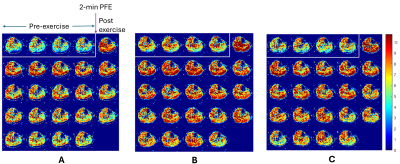 |
Computer Number: 95
4521. Testing
inter-scanner reproducibility of CrCEST at 3T
J. Valley, R. Burman, P. Adede, Y. Pang, K. Ness, P. Bagga
St. Jude Children's Research Hospital, Memphis, United States
Impact: This study highlights the inter-scanner
reproducibility of CrCEST MRI technique for mapping muscle
group-specific OXPHOS activity with moderate reproducibility
in calf muscle. High reliability of this technique will
enable broader application in multi-center trials and
research studies on muscular OXPHOS.
|
|
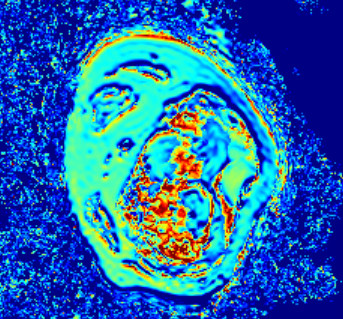 |
Computer Number: 96
4522. The
application of Multi-parametric Z-spectral CEST-MRI in bone
tumors
D. Huang, C. Su, Y. Lv, H. He, F. Zhu, W. Luo, M. Liu, J.
Peng, C. Xie
Sun Yat-Sen University Cancer Center, Guangzhou, China
Impact: Multi-parametric Z-spectral CEST-MRI enables
noninvasively detection molecular metabolic changes in bone
tumors, providing valuable biomarkers for early diagnosis,
monitoring tumor progression, and assessing treatment
responses, ultimately aiding in personalized therapy and
improving clinical outcomes.
|
The International Society for Magnetic Resonance in Medicine is accredited by the Accreditation Council for Continuing Medical Education to provide continuing medical education for physicians.